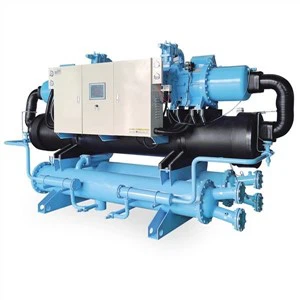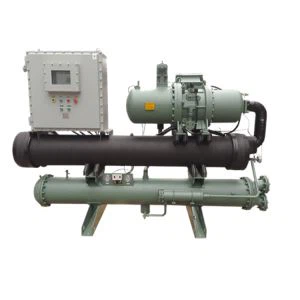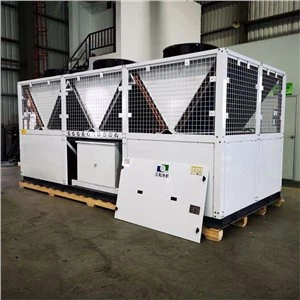Hey there! I'm an expert from a heat exchanger supplier, and today I'm gonna break down how a heat exchanger works in a refrigeration system. It's a pretty cool topic, and understanding it can help you make better decisions when it comes to your refrigeration needs.
The Basics of a Refrigeration System
Before we dive into the heat exchanger, let's quickly go over the basic components of a refrigeration system. A typical refrigeration system consists of four main parts: a compressor, a condenser, an expansion valve, and an evaporator. The refrigerant, a special fluid, circulates through these components, changing states from a gas to a liquid and back again, all while absorbing and releasing heat.
The compressor is like the heart of the system. It takes in low-pressure, low-temperature refrigerant gas and compresses it into a high-pressure, high-temperature gas. This high-pressure gas then moves to the condenser.
The condenser is where the magic of heat exchange starts to happen. It's essentially a heat exchanger that cools down the high-pressure refrigerant gas, causing it to condense into a high-pressure liquid. The heat from the refrigerant is transferred to the surrounding environment, usually through air or water.
Next up is the expansion valve. This little guy reduces the pressure of the high-pressure liquid refrigerant, turning it into a low-pressure, low-temperature mixture of liquid and gas. This mixture then enters the evaporator.
The evaporator is another heat exchanger. It absorbs heat from the surrounding space, causing the remaining liquid refrigerant to evaporate into a low-pressure gas. This gas then heads back to the compressor, and the cycle starts all over again.
How Heat Exchangers Fit In
So, as you can see, heat exchangers play a crucial role in the refrigeration process. They're responsible for transferring heat between the refrigerant and the surrounding environment. There are two main types of heat exchangers in a refrigeration system: the condenser and the evaporator.
The Condenser
The condenser is designed to remove heat from the refrigerant. As the high-pressure, high-temperature refrigerant gas enters the condenser, it comes into contact with a cooling medium, which can be air or water. The heat from the refrigerant is transferred to the cooling medium, causing the refrigerant to condense into a liquid.


There are different types of condensers, but one common type is the Seawater Shell and Tube Heat Exchanger. This type of condenser consists of a shell (a large container) and a bundle of tubes. The refrigerant flows through the tubes, while the seawater (or other cooling medium) flows around the tubes in the shell. The large surface area of the tubes allows for efficient heat transfer between the refrigerant and the seawater.
The Evaporator
The evaporator, on the other hand, is responsible for absorbing heat from the surrounding space. As the low-pressure, low-temperature refrigerant mixture enters the evaporator, it absorbs heat from the air or other substances in the refrigerated space. This causes the refrigerant to evaporate into a gas.
There are also different types of evaporators. One type is the U Type Evaporator. This evaporator has a U-shaped design, which allows for a more compact and efficient heat transfer. Another type is the Flooded Type Shell and Tube Evaporator. In this type of evaporator, the tubes are submerged in a pool of liquid refrigerant, which helps to maximize the heat transfer area.
The Heat Transfer Process
Now, let's take a closer look at how heat transfer occurs in a heat exchanger. Heat transfer happens through three main mechanisms: conduction, convection, and radiation. In a heat exchanger, conduction and convection are the primary methods of heat transfer.
Conduction is the transfer of heat through a solid material. In a heat exchanger, the refrigerant and the cooling medium are separated by a solid wall, usually made of metal. The heat from the refrigerant is conducted through the wall to the cooling medium.
Convection is the transfer of heat through the movement of a fluid. In a heat exchanger, the refrigerant and the cooling medium flow past each other, either in parallel or counterflow. The movement of the fluids helps to increase the heat transfer rate by constantly bringing fresh fluid into contact with the heat transfer surface.
To maximize the heat transfer efficiency, heat exchangers are designed with a large surface area and a high heat transfer coefficient. The surface area can be increased by using fins or tubes, while the heat transfer coefficient can be improved by using a good heat transfer fluid and optimizing the flow conditions.
Factors Affecting Heat Exchanger Performance
There are several factors that can affect the performance of a heat exchanger in a refrigeration system. These include:
- Flow Rate: The flow rate of the refrigerant and the cooling medium can have a significant impact on the heat transfer rate. A higher flow rate generally results in a higher heat transfer rate, but it also increases the pressure drop and energy consumption.
- Temperature Difference: The temperature difference between the refrigerant and the cooling medium is another important factor. A larger temperature difference generally leads to a higher heat transfer rate, but it also requires more energy to maintain.
- Fouling: Fouling is the accumulation of dirt, debris, and other contaminants on the heat transfer surface. This can reduce the heat transfer efficiency and increase the pressure drop. Regular cleaning and maintenance are essential to prevent fouling.
- Material Selection: The choice of materials for the heat exchanger can also affect its performance. Materials with high thermal conductivity, such as copper and aluminum, are commonly used to improve the heat transfer efficiency.
Why Choose Our Heat Exchangers
As a heat exchanger supplier, we understand the importance of providing high-quality products that meet the specific needs of our customers. Our heat exchangers are designed and manufactured using the latest technology and the highest quality materials, ensuring reliable and efficient performance.
We offer a wide range of heat exchangers, including Seawater Shell and Tube Heat Exchangers, U Type Evaporators, and Flooded Type Shell and Tube Evaporators. Whether you need a heat exchanger for a small refrigeration unit or a large industrial system, we have the solution for you.
In addition to our high-quality products, we also provide excellent customer service. Our team of experts is always available to answer your questions and help you choose the right heat exchanger for your application. We also offer installation, maintenance, and repair services to ensure that your heat exchanger operates at peak performance.
Contact Us for Your Heat Exchanger Needs
If you're in the market for a heat exchanger for your refrigeration system, don't hesitate to contact us. We'd love to discuss your requirements and provide you with a free quote. Whether you're a small business or a large corporation, we have the expertise and the products to meet your needs.
Investing in a high-quality heat exchanger can make a big difference in the efficiency and performance of your refrigeration system. So, why wait? Get in touch with us today and let us help you find the perfect heat exchanger for your application.
References
- Incropera, F. P., DeWitt, D. P., Bergman, T. L., & Lavine, A. S. (2007). Fundamentals of Heat and Mass Transfer. John Wiley & Sons.
- Stoecker, W. F., & Jones, J. W. (1982). Refrigeration and Air Conditioning. McGraw-Hill.






